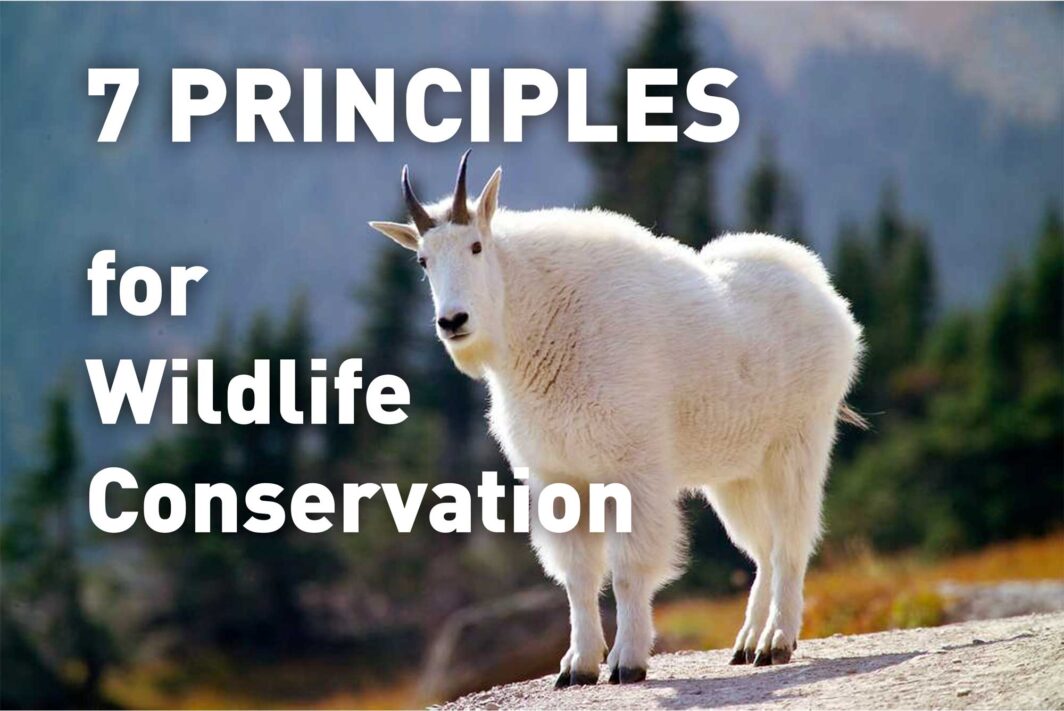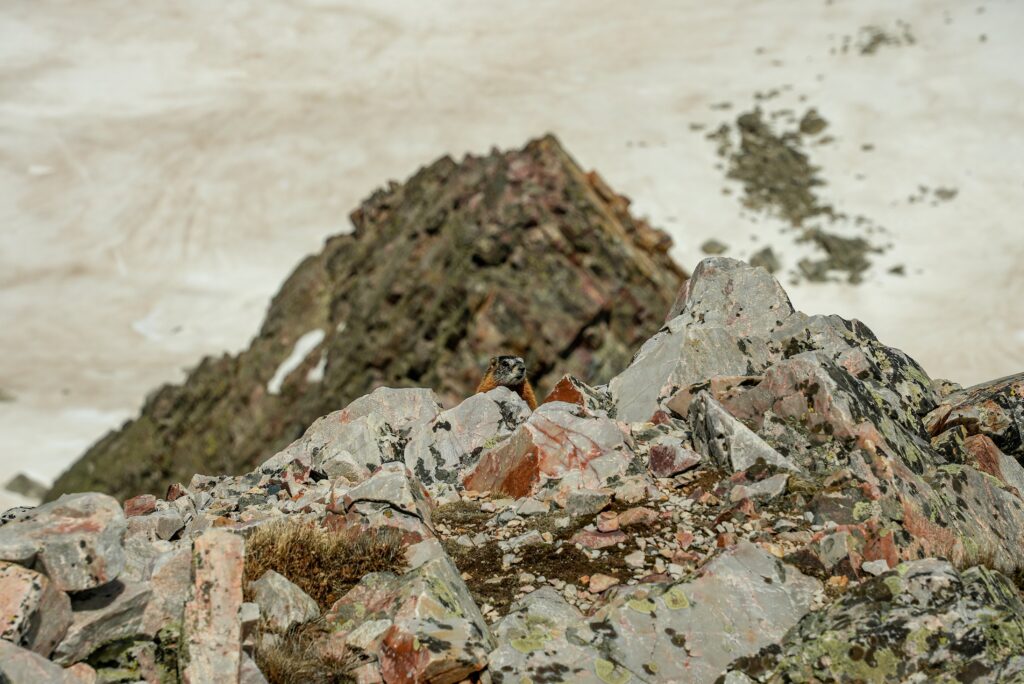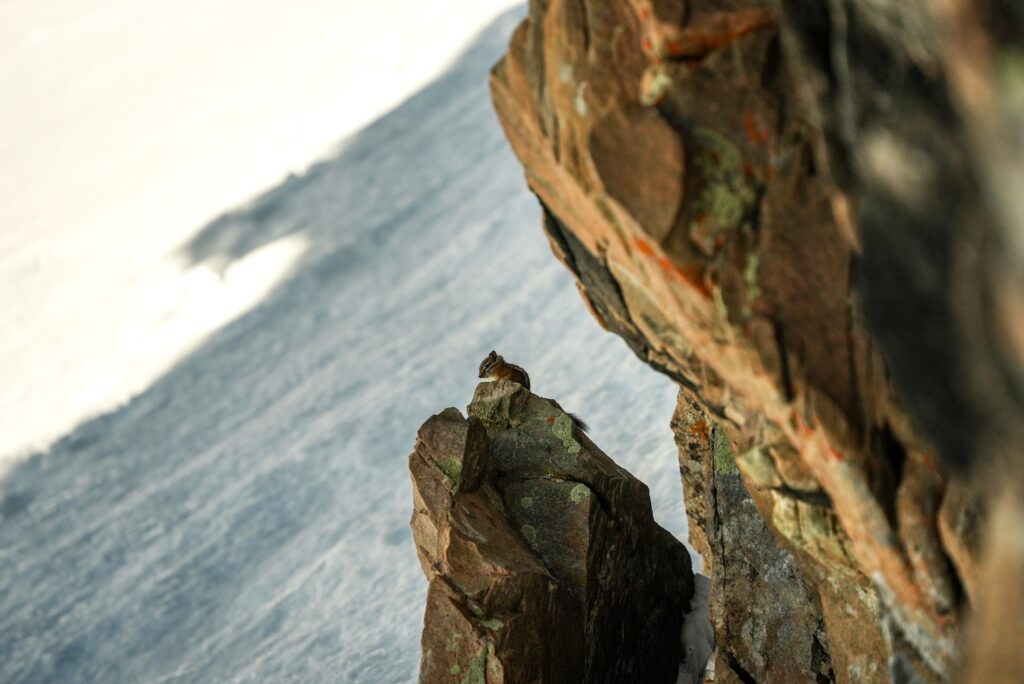
Tread Lightly: 7 Principles for Wildlife Conservation
Wildlife thrives in the backcountry, from the majestic to the minuscule, each playing a role in the ecosystem. As backcountry travelers, we each have an important part to play in wildlife conservation. Wildlife encounters can be the highlight of outdoor adventures, but preparing for these encounters is vital for the safety of both animals and adventurers.
Share this Post
Encounters with large predators often grab our attention when preparing for our outings. Yet, the impact of our presence on less intimidating wildlife, like deer, mountain goats, or marmots, also matters. These creatures, though not a significant threat to humans, are crucial for ecosystem balance and deserve our respect.
Backcountry travelers might meet various wildlife, including endangered species like the Sierra Nevada bighorn sheep. Winter recreational activities particularly disturb these animals. Such disturbances can push them out of their habitats, affecting their survival and reproduction due to increased stress and energy used to avoid humans. Additionally, skiers can drive these animals into poorer-quality habitats, impacting their ability to thrive.
Viewing these encounters as harmless or enchanting is common. And they can be both! As long as we remember that our presence can have unintended effects on their health and behavior. Thoughtless action can change their migration patterns or lead to habituation, where animals lose their natural wariness of humans. These changes risk both animals and humans. Careless interactions can alter ecological dynamics, including predator-prey relationships, which can make wildlife conservation even more difficult in the future.
As visitors to wild spaces, we must minimize our impact and maintain these environments’ integrity. Adhering to the following seven principles ensures that we do not disturb the animals’ natural movements and behaviors:
7 Principles for Minimizing Wildlife Impact
1. Stay on Designated Trails
- This one primarily applies to off-snow travel since skinning/snowshoeing allows you to navigate terrain on the snow surface rather than dirt.
- Stick to marked paths and trails to minimize the disturbance to natural habitats.
- Venturing off-trail can lead to trampling of vegetation and delicate soils, disruption of nesting sites, and increased stress on wildlife.
- Staying on trails reduces the likelihood of surprising wildlife, which can lead to defensive behavior.
2. Observe From a Distance:
- Use binoculars or telephoto lenses to get a closer look without physically approaching the animals.
- Maintain a safe and respectful distance at all times to avoid altering their natural behaviors.
- Avoid making loud noises or movements that could stress or scare the wildlife.
3. Resist Feeding Wildlife:
- Feeding wildlife, even if it seems harmless, can lead to unhealthy dependencies on human-provided foods.
- Human food can be harmful to animal health, leading to nutritional imbalances or even death.
- Animals habituated to human food may become aggressive, posing a danger to themselves and other visitors.
4. Store Food Properly:
- Use bear-proof containers and storage methods to secure food and scented items, reducing attractants for wildlife.
- Practice proper food storage techniques even in areas not known for bear activity, as other animals can also be attracted to food smells.
- Familiarize yourself with local regulations regarding food storage in wilderness areas to ensure compliance and safety for both wildlife and humans.


5. Proper Waste Disposal:
- Leave no trace. Pack out what you pack in, including all trash, leftover food, and litter.
- Utilize toilet facilities or follow recommended practices for disposing of human waste. Consult with local authorities regarding legal guidelines. For example, digging a cat hole isn’t an option when you’re traveling in a watershed.
6. Respect Plant Life:
- Avoid picking flowers, breaking tree limbs, or even moving rocks. Remember: some life is microscopic! Leave natural objects undisturbed to preserve plant health, biodiversity, and the beauty of the area.
7. Engage the Professionals:
- Last but not least, communicate with local wildlife experts. These interactions provide crucial insights into the behaviors and needs of wildlife in your area, ensuring that your backcountry adventures are conducted in a manner that respects and preserves the natural environment. Informed engagement helps in making conscious decisions that contribute to the health of these precious ecosystems.
- U.S. Fish and Wildlife Service
- Department of Natural Resources (like the Utah Division of Wildlife Resources)
- Local advocacy and research groups
- Park Rangers, if applicable
The wilderness teaches us the beauty of balance. These seven principles for minimizing our wildlife impact during backcountry adventures ensure that we are doing our part to preserve that balance. Let’s embark on our next adventure with mindfulness, respect, and wildlife conservation in mind, ensuring that the wild remains just that—utterly and beautifully wild.
Share this Post





